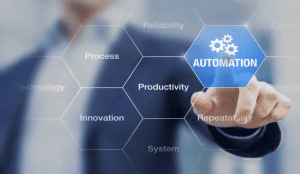Four ITSM predictions for 2018

Table of Contents
ToggleIn ITSM change is inevitable and constant. Falling behind has undesirable consequences.
The pace of change in IT will increase and its impact will be more profound than ever in the years ahead.
Savvy IT leaders recognize they must strategically plan for a new workforce demographic, lead enterprise service management (ESM) initiatives and capture the benefits of AI to accommodate the pace of change.
Meeting these objectives while remaining bogged down with traditional processes, outdated performance measurements and manual tools won’t scale.
Here are four ways IT will be transformed in 2018:
1. SLAs evolve to KPIs:
 As more and more organizations measure success based on KPIs such as Net Promoter Score (NPS), Customer Lifetime Value (CLV) and Cost Performance Index (CPI), businesses are increasingly seeking to understand corporate IT’s value based on similar measurements.
As more and more organizations measure success based on KPIs such as Net Promoter Score (NPS), Customer Lifetime Value (CLV) and Cost Performance Index (CPI), businesses are increasingly seeking to understand corporate IT’s value based on similar measurements.
In the coming year, pressure will mount for IT to move from relying solely on operational metrics to those that also measure how IT services and support are being consumed and delivered. IT will increasingly be measured based on employee satisfaction, business performance and customer value creation.
Performance measurements such as customer sat, MTTR, and cost per ticket must incorporate metrics and targets that concentrate on optimizing the value of technology and allowing IT to demonstrate how it’s contributing to the goals of the company.
2. Next generation employees expect next gen IT:
 Just as organizations have come to terms with millennial challenges, the first Generation Z graduates will enter the workforce in 2018.
Just as organizations have come to terms with millennial challenges, the first Generation Z graduates will enter the workforce in 2018.
Born between 1996-2010, Generation Z is the first digitally native generation. Given that the iPhone was released in 2007, this generation has not known a world without smartphones or social media. And their reliance and expectations on workplace technology will exceed even those of millennials.
In fact, a study by Goldman Sachs found that almost half of those in Generation Z are online for 10 hours a day or more. Another study by the International Center for Media & the Public Agenda found nearly four in five students had significant mental and physical distress, panic, confusion and extreme isolation when forced to disconnect for a day.
IT must prepare for the fact that this demographic will demand real-time, 24×7 access to technology services.
3. Enterprise service management (ESM) becomes business-critical:
 As businesses continue to seek new ways of improving how they interact and provide services to customers and employees with technology, they are quickly discovering that digital and IT transformation go hand in hand. Thus, IT will increasingly be expected to take the lead on digital transformation efforts that span the entire organization including business units such as HR, Facilities and Finance.
As businesses continue to seek new ways of improving how they interact and provide services to customers and employees with technology, they are quickly discovering that digital and IT transformation go hand in hand. Thus, IT will increasingly be expected to take the lead on digital transformation efforts that span the entire organization including business units such as HR, Facilities and Finance.
Thus, ESM will be a top priority for IT leaders in the new year. Likewise, two new ITSM frameworks launch in 2018, VeriSM and a new version of ITIL. Both aim to help IT expand into ESM as well as reduce the bureaucracy that’s associated with traditional IT processes.
4. Nothing artificial about AI in 2018:
 AI is expected to be the biggest force of change in ITSM in the new year. As the practical benefits of narrow AI continue to rise above the media hype of general AI, IT leaders will embrace AI to improve service experiences and lower operations costs.
AI is expected to be the biggest force of change in ITSM in the new year. As the practical benefits of narrow AI continue to rise above the media hype of general AI, IT leaders will embrace AI to improve service experiences and lower operations costs.
Likewise, IT will significantly increase its usage of AI-based virtual agents and automation to reduce the need for support agents to deal with routine inquiries and to ensure that when incidents and requests do require human intervention, they get directed to the right agents.
Gartner predicts that by 2020, 55% of all large enterprises will have deployed at least one bot or chatbot in production and AI augmentation will generate $2.9T in business value and recover 6.2B hours of worker productivity by 2021.
Gartner also forecasts that by 2020, AI will become a positive net job motivator, creating 2.3M jobs while eliminating only 1.8M jobs. This aligns with the widely-held view that AI will augment human workers, not replace them.
The nature of day to day IT tasks will change. For instance, IT staff who are incapable or unwilling to advance from manual repetitive tasks such as resetting passwords, unlocking accounts and escalating tickets will increasingly be outpriced and outperformed by AI systems. It is individuals who have a desire to use their uniquely human qualities such as empathy, reasoning and rapport building skills to empower the business that stand to benefit the most from AI.
Early adopters of AI for ITSM will gain a competitive advantage in terms of addressing technological and/or cultural barriers to adoption and gaining value from AI systems ahead of laggards.
Change is stability
The core mission of ITSM to create business value through the efficient and effective delivery of IT services and support will be more important than ever in 2018.
My advice for IT leaders: remain on the right side of change and you’ll be well-positioned for the future.





